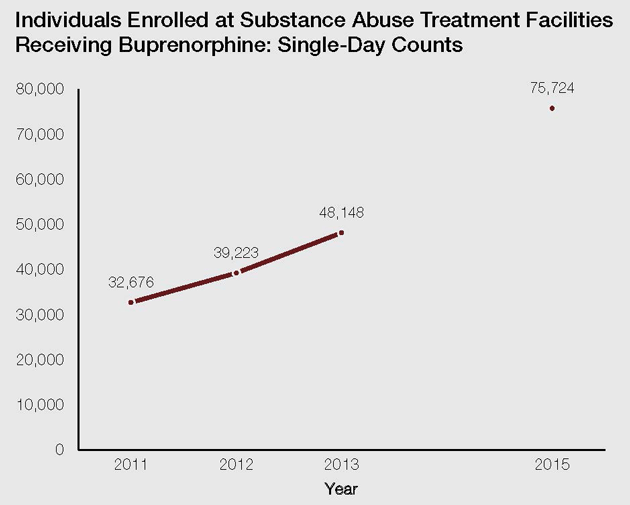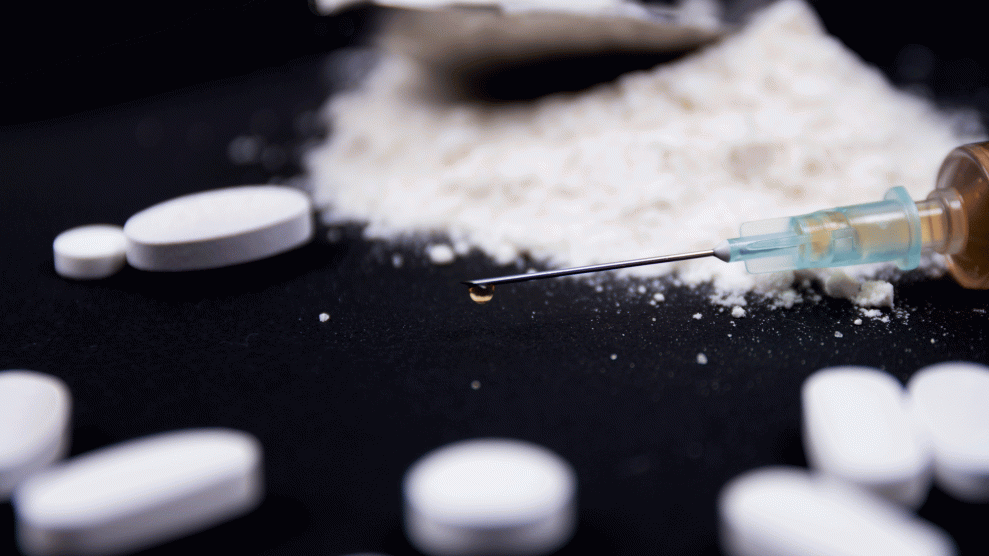Overdose deaths in America are surging, fueled by widespread addiction to opioids—a class of compounds that includes prescription painkillers like OxyContin and Vicodin, heroin, and fentanyl. Last year’s death toll likely topped 59,000 people, according to a recent New York Times analysis. That’s a 19 percent jump from the previous year.
The latest edition of the Behavioral Health Barometer, a report from the Substance Abuse and Mental Health Administration (SAMHSA), sheds light on who is abusing drugs—and who has access to treatment.
(Note: the charts below have been lightly edited for readability. See the original versions here.)
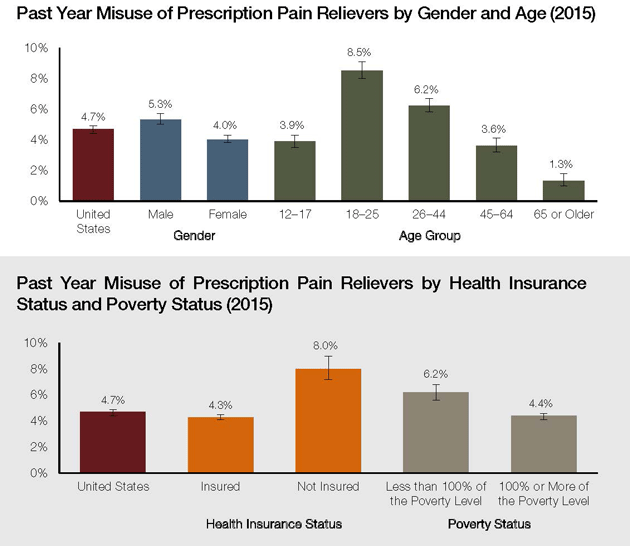
Roughly 12.5 million Americans over age 11 misused prescription painkillers in 2015—meaning they used a prescription that wasn’t their own or took more than the doctor ordered. Strikingly, rates of painkiller misuse were nearly double among uninsured Americans. “Uninsured people may not have access to pain treatment,” explained Dr. Beth Han, a researcher at SAMHSA’s Center for Behavioral Health Statistics and Quality. “They’re more likely to get it from their families and friends.” As the chart below shows, more than half of those who misused painkillers bought or took the drugs from a relative or friend. Sixty-two percent reported doing so to relieve physical pain.
Public health advocates worry that repealing Obamacare would further reduce access to both pain management and addiction treatment services.
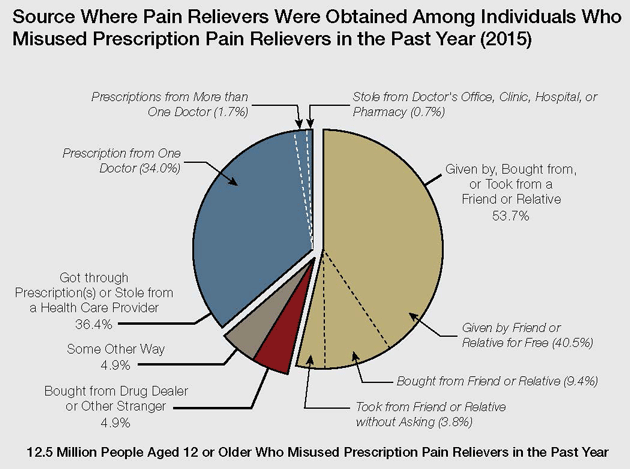
An additional 828,000 Americans reported using heroin, which many drug users transition to for a cheaper, stronger high after having become addicted to painkillers. (For more background on the opioid epidemic, check out our explainer.) As with painkiller misuse, heroin use was most common among young adults, men, the uninsured, and those living below the poverty line.
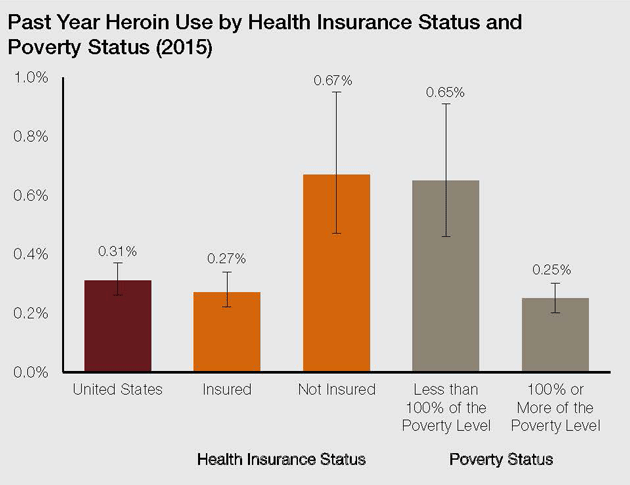
Overall, only 11 percent of those with a drug addiction received treatment for it. But the report showed a sharp rise in those receiving substance abuse treatment—a change that reflects both the increasing population in need of such treatment and increasing access to it, particularly in states that expanded Medicaid under Obamacare. Use of buprenorphine, a medication that treats opioid addiction, more than doubled between 2011 and 2015.